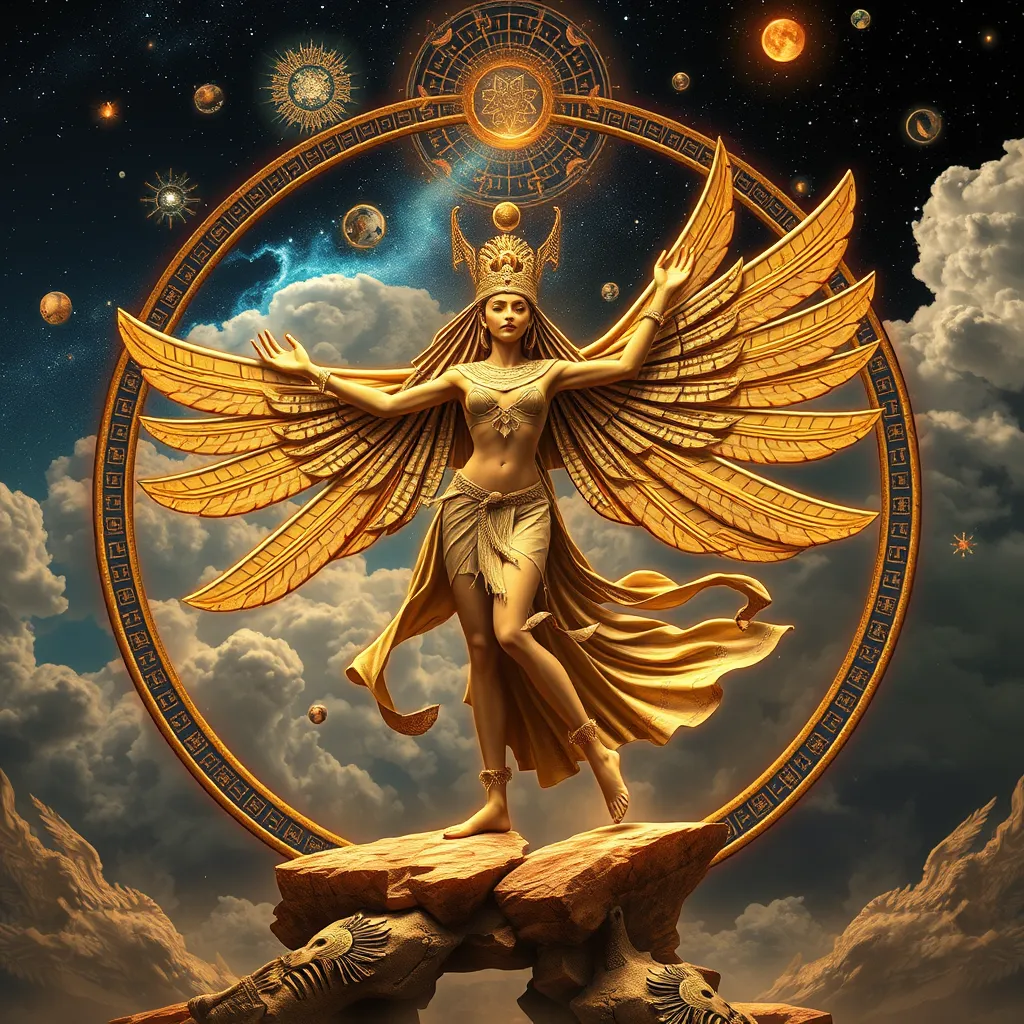Nut: The Goddess of the Sky, Her Cosmic Dance, and the Cycle of Life and Death
I. Introduction
In ancient Egyptian mythology, Nut is revered as the goddess of the sky, a celestial figure who plays a critical role in the cosmology of life and death. As the mother of the stars and the overarching canopy of the heavens, Nut embodies the duality of existence—life and death, creation and destruction. This article aims to explore Nut’s significance, her cosmic dance, and her symbolism in the cycles of life and death that are central to Egyptian belief systems.
II. The Mythological Origins of Nut
Nut’s origins are steeped in the rich tapestry of Egyptian mythology. She is often depicted as the daughter of the sky god, Shu, and the earth goddess, Tefnut. Her lineage connects her to other prominent deities, including Geb, the god of the earth, who is both her husband and brother.
In various creation myths, Nut plays a pivotal role. One prominent story tells of how she was cursed by her father, Ra, to never give birth on any day of the year. To counter this, Nut gambled with the moon god Khonsu, winning enough nights to create five additional days. Thus, on these days, she gave birth to her children, Osiris, Isis, Seth, and Nephthys. This myth highlights her significance in the Egyptian pantheon as a nurturer and creator.
Nut’s form symbolizes the sky itself, often depicted as a woman arched over the earth, covered in stars. This imagery represents her as the blanket of night, a protective layer that envelops the world.
III. Nut’s Cosmic Dance
Nut is frequently illustrated as an arched goddess, her body painted with stars, reflecting the cosmos she embodies. This physical representation emphasizes her role as the sky itself, bridging the earth and the heavens.
The significance of Nut’s movements is profound. Each night, she swallows the sun as it sets, and every morning, she gives birth to it anew. This daily cycle represents the eternal rhythm of existence, where death leads to rebirth. Nut’s dance across the sky symbolizes the passage of time and the cyclical nature of life.
In this cosmic journey, Nut plays a crucial role in the journey of Ra, the sun god. As Ra travels through the underworld at night, Nut protects him, ensuring his safe passage to rise again at dawn.
IV. Nut and the Cycle of Life
Nut embodies the concepts of life and rebirth, symbolizing the eternal cycle of existence. In ancient Egyptian culture, she was closely associated with agricultural cycles, as the fertility of the land depended on the regularity of the seasons and the nurturing rains that came from the sky.
Her nurturing nature extends beyond the earth to the stars and celestial bodies, which are often considered her children. This maternal aspect of Nut reinforces her role as a life-giver, connecting her to the fertility and sustenance of the natural world.
V. Nut and the Cycle of Death
Nut’s relationship with the underworld is equally significant. In Egyptian mythology, she is often depicted as a protector of the dead, guiding souls through the afterlife. Her arched body is seen as a protective barrier that separates the living from the dead, embodying the transition between worlds.
In the afterlife, Nut plays a vital role in the journey of souls. The deceased would often invoke her name during funerary rituals, seeking her protection and guidance. Myths surrounding Nut often emphasize the concept of resurrection, reinforcing the belief that death is not an end, but rather a transformation into another state of existence.
VI. Iconography and Worship of Nut
Nut’s significance in ancient Egyptian culture is reflected in her artistic representations. She is often depicted as a woman arched over the earth, her body adorned with stars, showcasing the night sky. These images were not only artistic expressions but served as spiritual symbols in tomb decorations and temples.
Temples dedicated to Nut were places of worship where rituals and offerings were made to honor her. These rituals often involved prayers for fertility and protection during the journey into the afterlife. Such practices highlight her importance in the spiritual lives of the ancient Egyptians.
In funerary practices, Nut’s image was frequently included in tomb paintings, symbolizing the deceased’s hoped-for protection and guidance in the afterlife. Her presence in these contexts underscores the interconnectedness of life, death, and the cosmos.
VII. Legacy of Nut in Modern Culture
Nut’s influence extends beyond ancient Egypt, permeating modern interpretations of mythology and spirituality. Her character has been referenced in various forms of literature, art, and popular culture, reflecting her enduring legacy.
- In literature, Nut’s story has inspired works that explore themes of life, death, and rebirth.
- In visual arts, contemporary artists often draw upon her imagery to symbolize the cosmos and the feminine divine.
- Nut’s symbolism continues to resonate in discussions surrounding the cycles of life and the mysteries of existence.
VIII. Conclusion
Nut stands as a powerful symbol in the cosmic order, embodying the interconnectedness of life, death, and the universe. Her myth and teachings remind us of the eternal cycles that govern our existence. As we reflect on her story, we recognize the profound nature of her influence, encouraging us to embrace the dualities of life and death and to find meaning in the cosmic dance that surrounds us.




